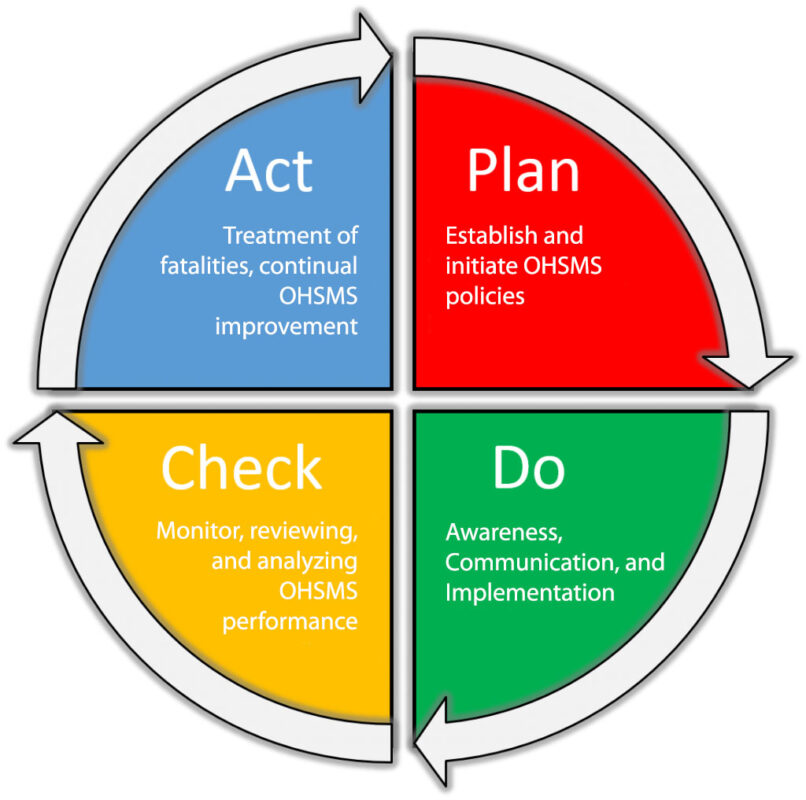ISO 45001:2018 Occupational health and safety (OHS), Uncategorized
ISO 45001:2018 Occupational health safety (OHS)
Courtesy: ISO 45001:2018 Occupational health safety (OHS)
ISO 45001:2018 specifies requirements for an occupational health and safety (OH&S) management system, and gives guidance for its use, to enable organizations to provide safe and healthy workplaces by preventing work-related injury and ill health, as well as by proactively improving its OH&S performance.

ISO 45001:2018 is applicable to any organization that wishes to establish, implement and maintain an OH&S management system to improve occupational health and safety, eliminate hazards and minimize OH&S risks (including system deficiencies), take advantage of OH&S opportunities, and address OH&S management system nonconformities associated with its activities.
ISO 45001:2018 helps an organization to achieve the intended outcomes of its OH&S management system. Consistent with the organization’s OH&S policy, the intended outcomes of an OH&S management system include:

a) continual improvement of OH&S performance;
b) fulfilment of legal requirements and other requirements;
c) achievement of OH&S objectives.
ISO 45001:2018 is applicable to any organization regardless of its size, type and activities. It is applicable to the OH&S risks under the organization’s control, taking into account factors such as the context in which the organization operates and the needs and expectations of its workers and other interested parties.
ISO 45001:2018 does not state specific criteria for OH&S performance, nor is it prescriptive about the design of an OH&S management system.
ISO 45001:2018 enables an organization, through its OH&S management system, to integrate other aspects of health and safety, such as worker wellness/wellbeing.
ISO 45001:2018 does not address issues such as product safety, property damage or environmental impacts, beyond the risks to workers and other relevant interested parties.
ISO 45001:2018 can be used in whole or in part to systematically improve occupational health and safety management. However, claims of conformity to this document are not acceptable unless all its requirements are incorporated into an organization’s OH&S management system and fulfilled without exclusion.

For organizations that are serious about improving employee safety, reducing workplace risks and creating better, safer working conditions, there’s ISO 45001.
According to the International Labour Organization, more than 7 600 people die from work-related accidents or diseases every single day. That’s why an ISO committee of occupational health & safety experts set to work to develop an International Standard with the potential to save almost three million lives each year. Structured in a similar way to other ISO management systems, the approach will be familiar to users of standards such as ISO 14001 or ISO 9001. ISO 45001 builds on the success of earlier international standards in this area such as OHSAS 18001, the International Labour Organization’s ILO-OSH Guidelines, various national standards and the ILO’s international labour standards and conventions.

